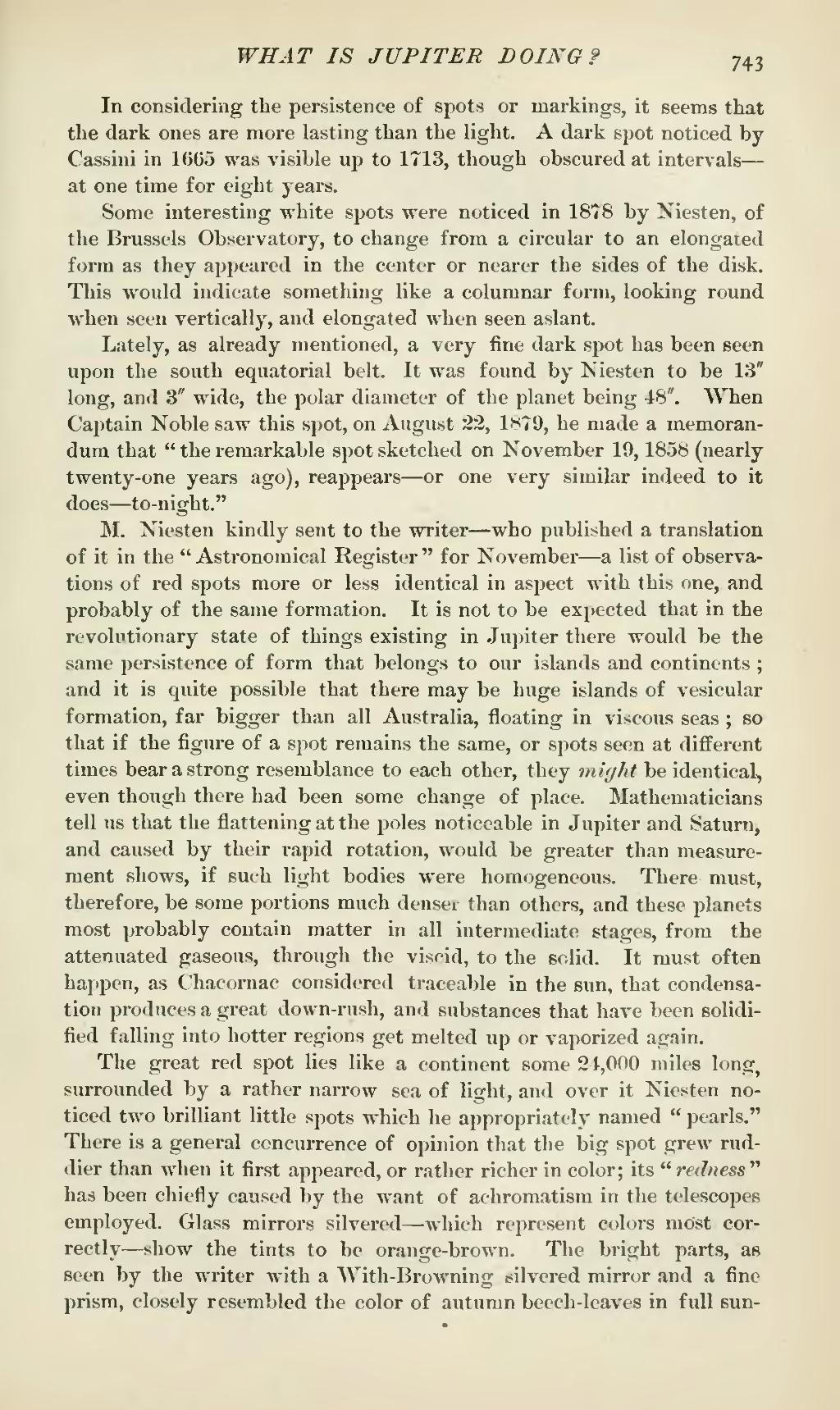In considering the persistence of spots or markings, it seems that the dark ones are more lasting than the light. A dark spot noticed by Cassini in 1665 was visible up to 1713, though obscured at intervals—at one time for eight years.
Some interesting white spots were noticed in 1878 by Niesten, of the Brussels Observatory, to change from a circular to an elongated form as they appeared in the center or nearer the sides of the disk. This would indicate something like a columnar form, looking round when seen vertically, and elongated when seen aslant.
Lately, as already mentioned, a very fine dark spot has been seen upon the south equatorial belt. It was found by Niesten to be 13" long, and 3" wide, the polar diameter of the planet being 48". When Captain Noble saw this spot, on August 22, 1879, he made a memorandum that "the remarkable spot sketched on November 19, 1858 (nearly twenty-one years ago), reappears—or one very similar indeed to it does—to-night."
M. Niesten kindly sent to the writer—who published a translation of it in the "Astronomical Register" for November—a list of observations of red spots more or less identical in aspect with this one, and probably of the same formation. It is not to be expected that in the revolutionary state of things existing in Jupiter there would be the same persistence of form that belongs to our islands and continents; and it is quite possible that there may be huge islands of vesicular formation, far bigger than all Australia, floating in viscous seas; so that if the figure of a spot remains the same, or spots seen at different times bear a strong resemblance to each other, they might be identical, even though there had been some change of place. Mathematicians tell us that the flattening at the poles noticeable in Jupiter and Saturn, and caused by their rapid rotation, would be greater than measurement shows, if such light bodies were homogeneous. There must, therefore, be some portions much denser than others, and these planets most probably contain matter in all intermediate stages, from the attenuated gaseous, through the viscid, to the solid. It must often happen, as Chacornac considered traceable in the sun, that condensation produces a great down-rush, and substances that have been solidified falling into hotter regions get melted up or vaporized again.
The great red spot lies like a continent some 24,000 miles long, surrounded by a rather narrow sea of light, and over it Niesten noticed two brilliant little spots which he appropriately named "pearls." There is a general concurrence of opinion that the big spot grew ruddier than when it first appeared, or rather richer in color; its "redness" has been chiefly caused by the want of achromatism in the telescopes employed. Glass mirrors silvered—which represent colors most correctly—show the tints to be orange-brown. The bright parts, as seen by the writer with a With-Browning silvered mirror and a fine prism, closely resembled the color of autumn beech-leaves in full sun-
